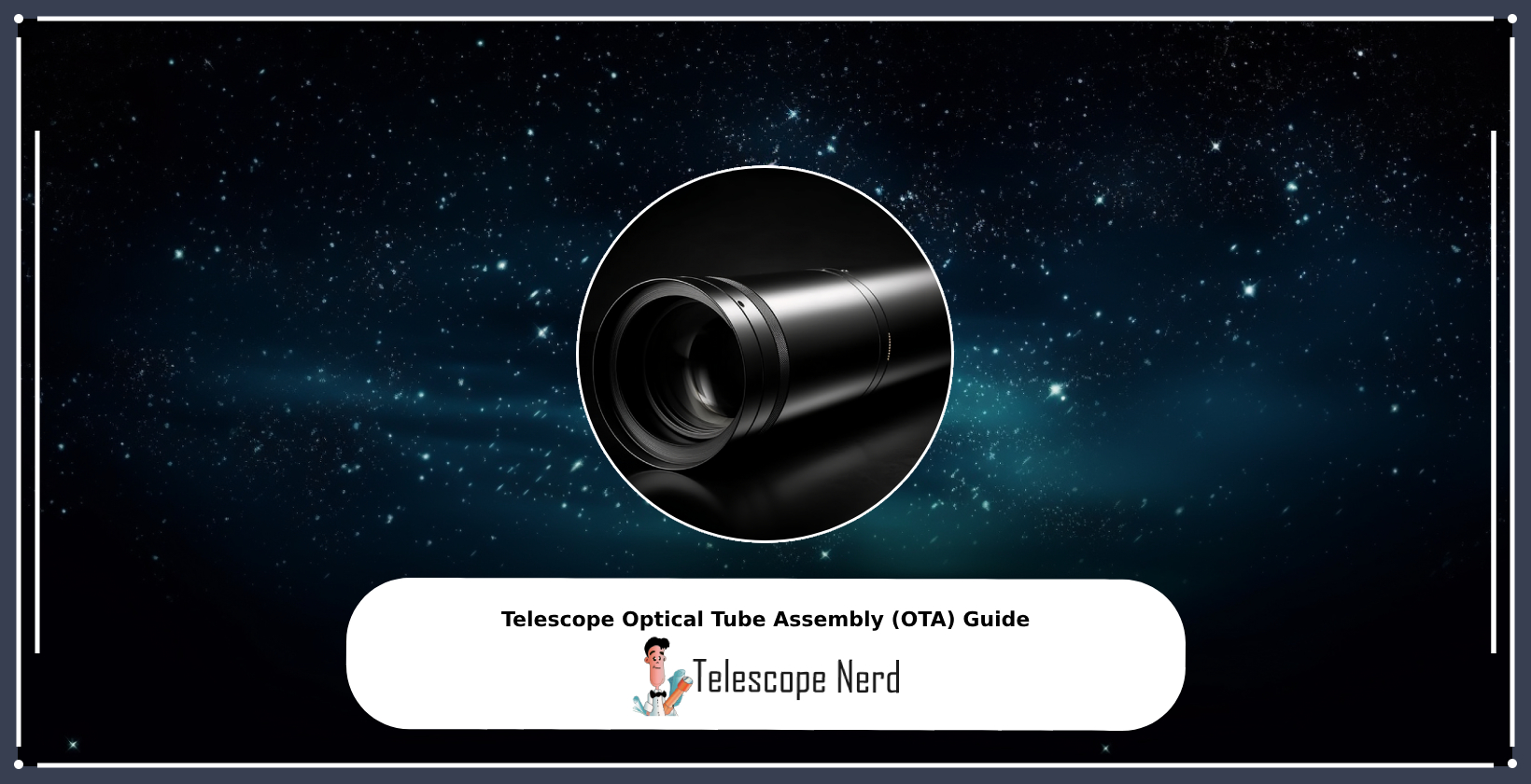Telescope Optical Tube Assembly (OTA) Guide
The Optical Tube Assembly (OTA), also called the optical tube, is a part of the telescope that houses the optical components, such as the primary and secondary mirrors. Knowing the design and function of the OTA is crucial as it determines the operational capabilities, resolution, and sensitivity.
The primary function of the optical tube assembly is to provide a protective environment for the telescope’s optical components. These optical components, including mirrors and lenses, are precisely positioned in the OTA to maintain correct alignment and protection from external contaminants. This protection ensures that light entering the telescope is directed and focused accurately, leading to clear images.
The design and material of the OTA will define a telescope’s durability and performance. The OTA is typically made from durable materials like aluminum or steel, with high-end designs often incorporating carbon fiber or fiberglass. The choice of material affects the telescope’s weight, thermal stability, and overall durability. The dimensions of the optical tube assembly will also determine telescope sizes, as it encompasses the length and diameter of the telescope.
Cleaning the exterior of the optical tube is vital to prevent dust and debris from entering the system. When removing the OTA from its mount, one must exercise caution to avoid misalignment or damage to the internal components.
How Does the Optical Tube Affect the Size of a Telescope?
The Optical Tube Assembly (OTA), often referred to as the optical tube, is a primary determinant of telescope sizes. The OTA defines the length and diameter of the telescope, and consequently, its overall size.
The optical tube houses the primary and secondary optics, which include mirrors or lenses. The OTA also provides a mount for the eyepiece, finderscope, and star diagonals. The size of these mirrors, lenses, and components directly influences the length and width of the optical tube, as the OTA is tailored to their design.
For example, a telescope designed for deep-sky observations incorporate a larger primary mirror to gather more light, necessitating a longer and wider optical tube. Conversely, a telescope intended for basic planetary observations will have a smaller mirror, leading to a more compact OTA.
While the optical tube protects a telescope’s optics from dust and debris, regular cleaning is necessary to prevent contaminants from entering the OTA and affecting the internal optics.
How to Clean Optical Tube Assembly?
Cleaning the Optical Tube Assembly (OTA) is vital for preserving the telescope’s performance and longevity. Over time, the OTA will accumulate dust and debris, which will obstruct light and impact image quality. Proper maintenance ensures clear, sharp images and safeguards the internal optics from contaminants.
To clean the optical tube assembly, astronomers use a soft lint-free cloth, a gentle optical cleaning solution, and a soft brush or air blower. Before cleaning, carefully detach the OTA from its mount. Detaching the OTA provides better access to the entire tube and minimizes the risk of damaging other telescope components.
With the soft brush or air blower, gently remove any loose dust or debris from the optical tube’s exterior. After removing larger particles, dampen a section of the lint-free cloth with the cleaning solution and gently wipe the exterior using light, circular motions to prevent scratching.
Approach internal cleaning with caution. Often, an air blower suffices to remove dust from the internal mirrors or lenses. If stubborn spots or smudges appear on the internal optics, it’s advisable to consult the telescope’s manual or seek expert guidance.
After ensuring the OTA is clean and dry, reattach it to its mount. Ensure all connections are secure and that the optical components align correctly. Following the outlined instructions and handling the OTA with care ensures clear observations and prolongs the equipment’s lifespan.
Is it Possible to Detach OTA From the Mount?
Yes, it is possible to detach the Optical Tube Assembly (OTA) from telescope mounts. Before detaching the OTA, ensure the telescope is on a stable surface.
Most telescopes come with screws or clamps that secure the OTA to the mount. Gently loosen these, but do not fully remove them yet. While holding the OTA securely with one hand, continue to loosen and then remove the mounting screws or clamps with the other hand. Once all securing mechanisms are removed, lift the OTA away from the mount. Handle the tube with care to avoid any damage or misalignment of the internal optics.
The process will vary depending on the type of mount in use. For instance, a Dobsonian mount typically has a different securing mechanism compared to an equatorial mount. The size and weight of the OTA also impact this process. Larger and heavier OTAs require additional support or even a second person to assist in the detachment process safely. Additionally, some telescope users implement custom modifications or additional securing mechanisms. It’s crucial to be aware of any alterations and account for them to ensure a safe detachment process.
While it is generally possible to detach the OTA from its mount, the specific process will vary based on the telescope’s design and any modifications. Always handle the OTA with care to ensure the safety of the equipment and the clarity of future observations.

